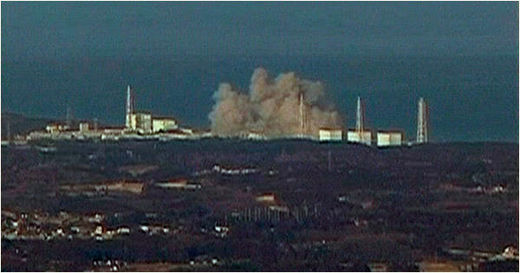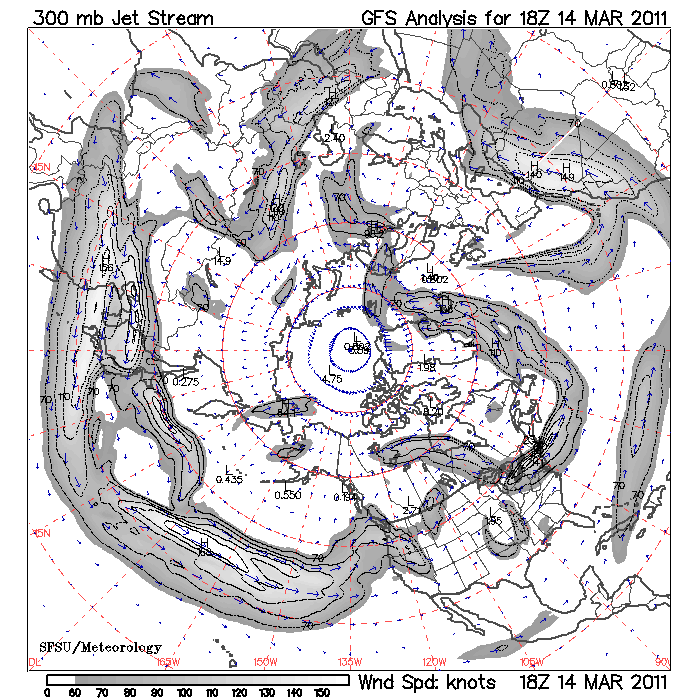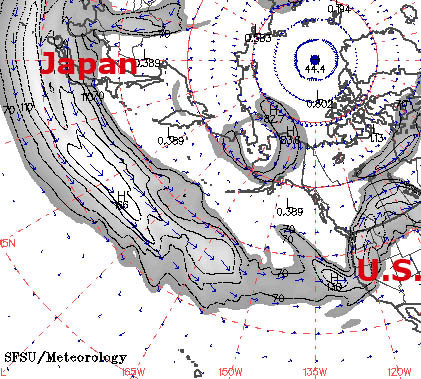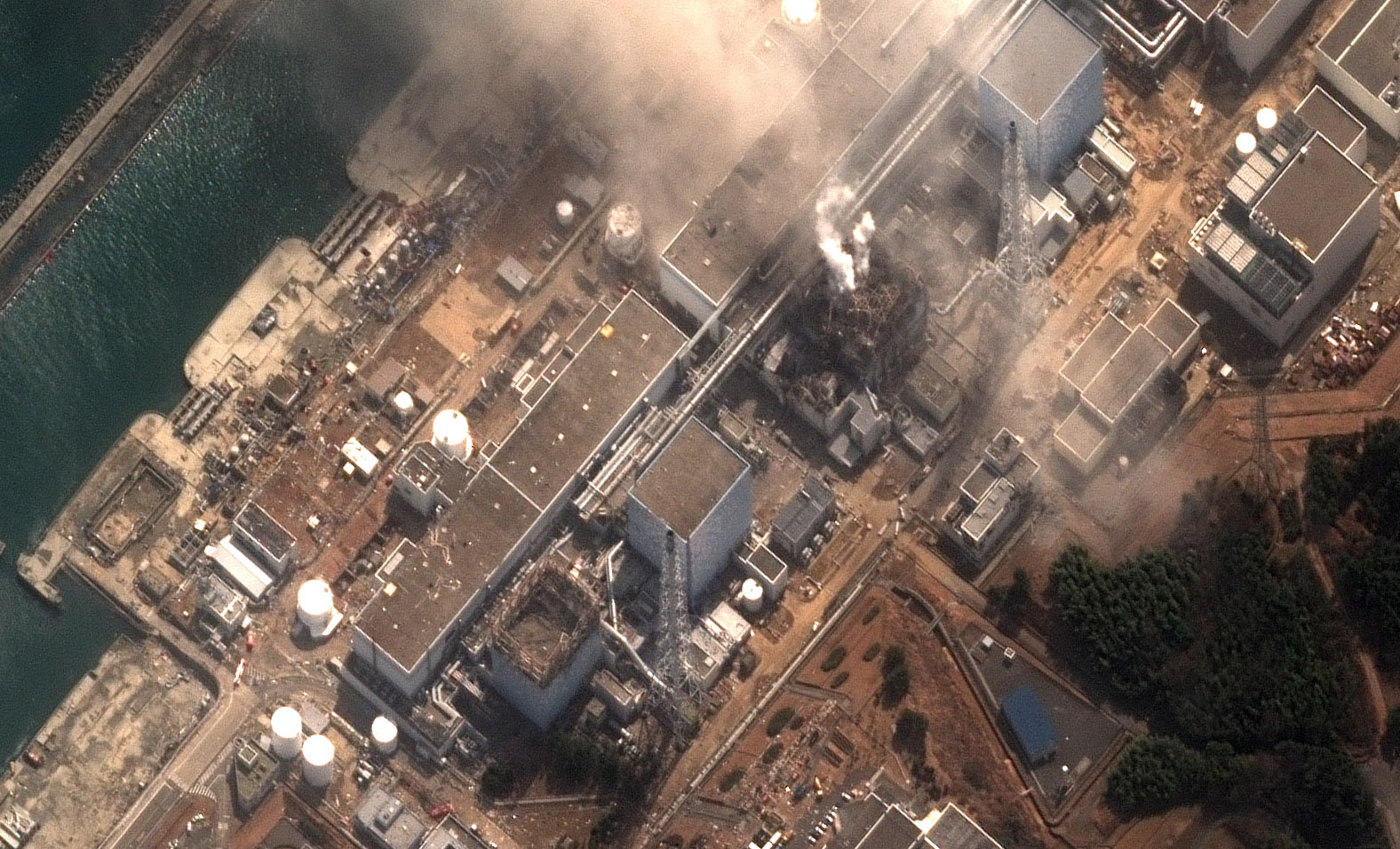But given the American government's cover up of the severity of the BP oil disaster, the health risk to New Yorkers after 9/11, and numerous other health issues, we will have to educate and empower ourselves.
As ABC News notes, experts says that Japan has a long history of nuclear cover-ups.
The New York Times points out:
The different radioactive materials being reported at the nuclear accidents in Japan range from relatively benign to extremely worrisome.BBC reports (scroll down on left side):
The central problem in assessing the degree of danger is that the amounts of various radioactive releases into the environment are now unknown, as are the winds and other atmospheric factors that determine how radioactivity will disperse around the stricken plants.
Japanese engineer Masashi Goto, who helped design the containment vessel for Fukushima's reactor core, says the design was not enough to withstand earthquakes or tsunami ...Indeed, Goto said:
"It is difficult to say, but that would be a core meltdown. If the rods fall and mix with water, the result would be an explosion of solid material like a volcano spreading radioactive material. Steam or a hydrogen explosion caused by the mix would spread radioactive waste more than 50km. Also, this would be multiplied. There are many reactors in the area so there would be many Chernobyls.And Goto accused the Japanese government of deliberately withholding vital information that would allow outside experts help solve the problems:
For example, there has not been enough information about the hydrogen being vented. We don't know how much was vented and how radioactive it was.What We Know
The jet stream passes right over Japan on its way to the West coast of the United States.
The former editor of the Japan Times - Yoichi Shimatsu - states that after a high-level government meeting, "Japanese agencies are no longer releasing independent reports without prior approval from the top," and that censorship of what is really occurring at the plant is being overseen under the Article 15 Emergency Law.
As I noted Saturday:
The jet stream passes right over Japan. The jet stream was noticed in the 1920's by a Japanese meteorologist near Mount Fuji, and the Japanese launched balloon bombs into the jetstream to attack America during WWII.If a meltdown caused radioactivity to be thrown high enough, or if the radioactivity got blown by surface winds up into the jet stream, it could spread widely.
Here's how the jet stream looks today:
Here is an artist's impression of how the jet stream could spread radiation in the future:
And here's a forecast for the next couple of days.
Accuweather notes the following times for radiation - in a worst-case scenario - to reach the West Coast:
Calculated time for radioactive particles to cross the Pacific from the power plants in Japan to big West Coast cities if the particles take a direct path and move at a speed of 20 mph:
But Accuweather meterologists argue that the winds will likely shift in different directions on a frequent basis, making it less likely that the radiation would be blown all of the way to the U.S.
As CNN Meterologist Ivan Cabrera says:
If radioactive material gets into the jet stream then... we share that with the world.
However, Cabrera points out that the Jet Stream is at 30,000-50,000 feet in altitude. 30,000 feet is 5.7 miles up. So that's a long way up above the Japanese nuclear reactors, which are essentially at sea level.
Unless the radiation from the Japanese nuclear power plants is carried aloft that high, it will probably not make it into the jet stream.
So far, there is no indication of any kind that radiation has been carried into the jet stream. However, a U.S. aircraft carrier around 100 miles from the nuclear power plants have been exposed to radiation. 100 miles is obviously greater than 5.7 miles, but that is horizontal distance, and does not necessarily mean that radiation has risen high into the air. Obviously, if the wind is blowing off-shore at ground level, then that will move the radiation more or less horizontally. That is very different from blowing the radiation upwards.
As all of the experts agree, if a truly huge meltdown occurs, then the odds of radiation reaching the jet stream increase dramatically.
As national security expert Joe Cirincione told Fox News' Chris Wallace:
The worst case scenario is that the fuel rods fuse together, the temperatures get so hot that they melt together in a radioactive molten mass that bursts through the containment mechanisms and is exposed to the outside. So they spew radioactivity in the ground, into the air, into the water. Some of the radioactivity could carry in the atmosphere to the West Coast of the United States.But a more difficult question is whether low-level radioactive release spread over many weeks or months could spread into the jet stream and then the Western United States.
As the New York Times notes:
Experts in Japan and the United States say the country is now facing a cascade of accumulating problems that suggest that radioactive releases of steam from the crippled plants could go on for weeks or even months.Indeed, Japan's nuclear problems may be spreading.
There are currently 3 Japanese nuclear reactors experiencing meltdown (and all 3 experienced explosions), and 3 more in trouble. The "Hail Mary" efforts to use seawater to cool the reactors has failed.
And even the Japanese government is now talking about damage to core containment structures. As MSN notes:
Chief Cabinet Secretary Yukio Edano told reporters that "damage appears on the suppression pool" -- the bottom part of the container, which contains water used to cool down the reactor and control air pressure inside.The Jet Propulsion Laboratory is forecasting a magnitude 8.0 aftershock, which could completely destroy the damaged reactors at the Fukushima facility:
"But we have not recorded any sudden jump in radiation indicators," Edano said without elaborating.
If confirmed, it will be the first direct damage to the reactor since a massive earthquake and tsunami battered Japan's northeast coast on Friday, knocking out nuclear plants in Fukushima, north of Tokyo.
And the limited radiation readings which are available are rather worrisome.









They've Bombed THEMSELVES!